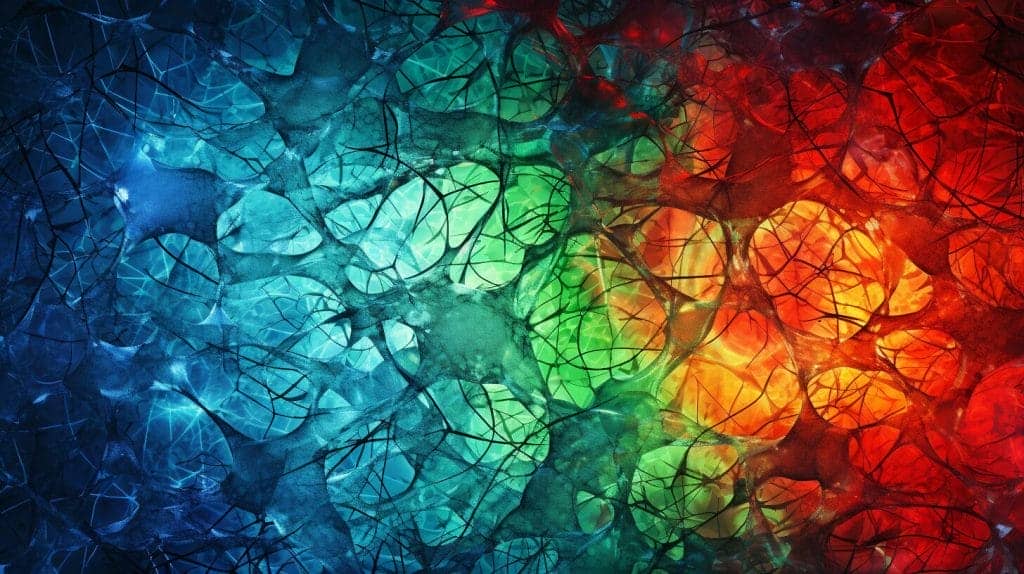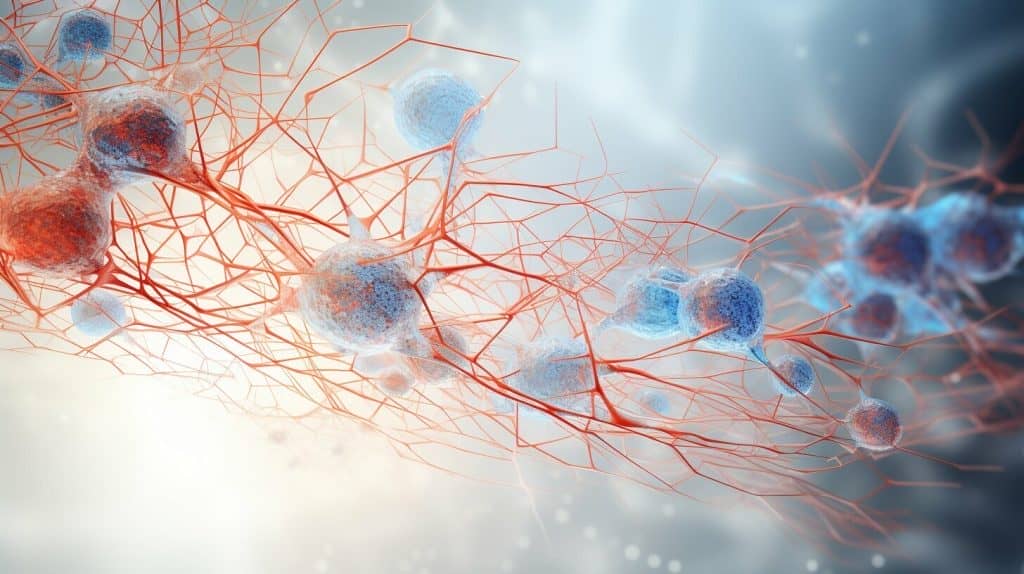Have you ever experienced unexplained symptoms like fatigue, headaches, and rashes? You may have been diagnosed with Lyme disease, mast cell activation syndrome, or multiple chemical sensitivities. While these conditions may seem unrelated, there is a growing body of evidence that suggests they are interconnected.
In this article, we will explore the relationship between Lyme disease, mast cell activation syndrome, and multiple chemical sensitivities. We will examine the potential mechanisms behind their interrelation, the common symptoms they share, and the diagnostic challenges that individuals face. We will also discuss innovative treatment approaches and lifestyle modifications that can help those affected by these conditions improve their quality of life.
Understanding Lyme Disease and Mast Cell Activation Syndrome
Lyme disease is a bacterial infection caused by the Borrelia burgdorferi bacteria, which is primarily transmitted to humans through the bite of an infected deer tick. If left untreated, the infection can spread to other parts of the body, leading to a range of symptoms that may include fever, headache, fatigue, joint pain, and neurological problems.
Mast cell activation syndrome (MCAS) is a condition that occurs when mast cells, which are a type of white blood cell involved in the body’s immune response, become overactive and release an excessive amount of inflammatory mediators. This can lead to a range of symptoms, such as flushing, itching, gastrointestinal disturbances, and difficulty breathing.
While Lyme disease and MCAS may seem unrelated at first glance, research has shown a clear connection between the two conditions. Studies have found that Lyme disease can trigger mast cell activation in some individuals, leading to the development of MCAS symptoms.
Link between Lyme disease, mast cell activation syndrome, and chemical sensitivities
In addition to MCAS, Lyme disease has also been linked to the development of multiple chemical sensitivities (MCS). MCS is a condition in which individuals experience a heightened sensitivity to various chemicals found in everyday products, such as fragrances, cleaning products, and pesticides.
Research has shown that both Lyme disease and MCAS can contribute to the development of MCS. One theory is that the release of inflammatory mediators by mast cells in response to the Lyme bacterium can lead to increased sensitivity to various chemicals. In addition, the inflammatory response triggered by Lyme disease may also contribute to the development of MCS symptoms.
| Lyme Disease | Mast Cell Activation Syndrome | Multiple Chemical Sensitivities |
|---|---|---|
| Caused by Borrelia burgdorferi bacteria | Overactive mast cells release excessive inflammatory mediators | Heightened sensitivity to various chemicals |
| Can lead to a range of symptoms, including fever, headache, fatigue, joint pain, and neurological problems | Can cause flushing, itching, gastrointestinal disturbances, and difficulty breathing | Symptoms may include headaches, dizziness, fatigue, and respiratory problems |
| Can trigger mast cell activation in some individuals, leading to the development of MCAS symptoms | Can contribute to the development of MCS symptoms | Research suggests a link between Lyme disease and MCS |
While the connection between Lyme disease, MCAS, and MCS is complex, understanding the interplay between these conditions is crucial for effective diagnosis and treatment. In the following sections, we will explore each of these conditions in more detail, highlighting their common symptoms, diagnostic challenges, and treatment approaches.
The Role of Mast Cells in Multiple Chemical Sensitivities
Multiple chemical sensitivities (MCS) is a debilitating condition characterized by a heightened sensitivity to a variety of environmental and chemical triggers. While the exact cause of MCS is not fully understood, research suggests that mast cells may play a significant role in the development and progression of this condition.
Mast cells are an essential component of the body’s immune system. They are involved in the body’s response to injury, inflammation, and infection, and they release a variety of chemicals, including histamine, cytokines, and chemokines, in response to different stimuli. Mast cells also play a role in regulating the body’s response to environmental triggers, such as allergens and toxins.
In individuals with MCS, mast cells are thought to be hyper-responsive to environmental triggers, leading to an exaggerated response that results in the symptoms associated with this condition. This hyperactivity is thought to be the result of chronic activation and sensitization of mast cells, which may be triggered by a variety of factors, including infections, exposure to toxins, and stress.
| Lyme Disease and Mast Cell Activation Syndrome |
|---|
| In addition to MCS, there is growing evidence to suggest that mast cell activation may be linked to other conditions, including Lyme disease and mast cell activation syndrome (MCAS). |
| Lyme disease is a bacterial infection transmitted through the bite of an infected tick. While the classic symptoms of Lyme disease include fever, headache, and a characteristic rash, many individuals with Lyme disease also experience a range of other symptoms, including fatigue, joint pain, and cognitive difficulties. |
| Research suggests that Lyme disease may trigger mast cell activation, resulting in an increased risk of developing MCAS and MCS. This link may be due to the ability of the Lyme bacteria to activate mast cells directly or through the release of inflammatory cytokines and chemokines. |
Common Symptoms and Overlapping Features
Lyme disease, mast cell activation syndrome, and multiple chemical sensitivities share many common symptoms and overlapping features. While each condition presents with its unique set of symptoms, there is a considerable overlap that can make diagnosis and treatment challenging.
| Lyme Disease | Mast Cell Activation Syndrome | Multiple Chemical Sensitivities |
|---|---|---|
| Fatigue | Flushing | Headaches |
| Muscle pain | Hives | Joint pain |
| Joint pain and swelling | Abdominal pain | Fatigue |
| Headaches | Difficulty breathing | Brain fog |
| Brain fog | Dizziness | Memory problems |
Mast cell activation syndrome can also trigger chemical sensitivity symptoms, such as nausea, vomiting, and breathing difficulties. Furthermore, both Lyme disease and mast cell activation syndrome can cause inflammation, leading to increased sensitivity to environmental triggers. This increased sensitivity can then further exacerbate symptoms related to multiple chemical sensitivities.
Diagnostic Challenges and Misdiagnosis
Diagnosing Lyme disease, mast cell activation syndrome, and multiple chemical sensitivities can be challenging due to the wide range of symptoms and the potential for overlap with other conditions. Misdiagnosis is also common, which can lead to delays in proper treatment and worsening of symptoms.
One of the primary challenges is the lack of a definitive diagnostic test for any of these conditions. Lyme disease, for example, is typically diagnosed based on symptoms, exposure to ticks, and blood tests. However, these tests are not always accurate, and false negatives are common. Mast cell activation syndrome and multiple chemical sensitivities also lack specific tests, making diagnosis based on symptoms and elimination of other possible causes.
Another issue is the overlap of symptoms with other conditions, such as chronic fatigue syndrome, fibromyalgia, and autoimmune disorders. This can lead to misdiagnosis and inappropriate treatment, as well as frustration for patients seeking answers.
Misdiagnosis of Multiple Chemical Sensitivities
Multiple chemical sensitivities can often be misdiagnosed as anxiety, depression, or other psychiatric conditions, as the symptoms can be similar. This can lead to inappropriate treatment with medications that do not address the underlying cause and may worsen symptoms.
It is important for individuals with suspected Lyme disease, mast cell activation syndrome, or multiple chemical sensitivities to seek out a healthcare provider experienced in the diagnosis and treatment of these conditions. A comprehensive approach that considers all potential contributing factors is essential for accurate diagnosis and effective treatment.
Treatment Approaches and Management Strategies
Effective treatment of Lyme disease, mast cell activation syndrome, and multiple chemical sensitivities requires a comprehensive approach that addresses underlying infections, manages mast cell activation, and minimizes exposure to triggers.
Antibiotics are the primary treatment for Lyme disease, with the goal of eradicating the infection. However, some individuals may require prolonged or repeated courses of antibiotics. Treating co-infections, such as Bartonella and Babesia, is also important as they can contribute to ongoing symptoms.
For mast cell activation syndrome, stabilizing mast cells is a key component of treatment. This may involve medications such as antihistamines, mast cell stabilizers, and leukotriene inhibitors. Avoiding triggers, such as certain foods or medications, is also crucial in managing symptoms.
Individuals with multiple chemical sensitivities may benefit from avoiding exposure to environmental triggers, such as fragrances, chemicals, and mold. Building a safe and supportive living environment, such as using air purifiers and non-toxic cleaning products, can also help minimize exposure.
Mast Cell Activation Syndrome Treatment
| Treatment Approach | Description |
|---|---|
| Antihistamines | Block histamine release and reduce symptoms such as flushing, itching, and swelling |
| Mast cell stabilizers | Prevent mast cells from releasing histamine and other inflammatory mediators |
| Leukotriene inhibitors | Block leukotriene synthesis, which can contribute to inflammation and asthma-like symptoms |
Integrative approaches, such as acupuncture, meditation, and mindfulness practices, may also be beneficial in managing symptoms and improving overall well-being. It is important to work with a healthcare provider who is familiar with these conditions and can help develop a personalized treatment plan.
Section 7: Lifestyle Modifications and Environmental Considerations
Living with Lyme disease, mast cell activation syndrome, and multiple chemical sensitivities can be challenging, but there are lifestyle modifications and environmental considerations that can help improve symptoms and overall quality of life.
Lifestyle Modifications
One of the most important steps in managing these conditions is to make lifestyle modifications that can minimize exposure to triggers. Some lifestyle modifications that can be helpful for individuals with Lyme disease and multiple chemical sensitivities include:
- Avoiding exposure to environmental toxins
- Eating a healthy and balanced diet
- Engaging in regular exercise and physical activity
- Getting adequate restorative sleep
- Reducing stress through relaxation techniques such as yoga or meditation
For individuals with mast cell activation syndrome, it is important to manage mast cell activation and reduce exposure to triggers that can cause symptoms. Some lifestyle modifications that may be helpful include:
- Avoiding triggers such as stress, heat, alcohol, and certain foods
- Taking regular breaks throughout the day to rest and improve blood flow
- Wearing loose-fitting, comfortable clothing to minimize physical irritation
- Using fragrance-free and hypoallergenic personal care products
Environmental Considerations
Environmental considerations are also crucial for individuals with these conditions. Exposure to environmental toxins, chemicals, and other triggers can exacerbate symptoms and cause further health complications. Some environmental considerations that can be helpful include:
| Environmental Factor | Suggested Modifications |
|---|---|
| Indoor Air Quality |
|
| Water Quality |
|
| Food Quality |
|
| Building Materials |
|
By making these lifestyle modifications and environmental considerations, individuals with Lyme disease, mast cell activation syndrome, and multiple chemical sensitivities may be able to reduce symptoms and improve their overall well-being.
Treatment Approaches and Management Strategies
Treatment for Lyme disease, mast cell activation syndrome, and multiple chemical sensitivities requires a comprehensive approach that addresses the underlying causes of each condition. Here are some management strategies that individuals with these conditions can consider:
Addressing Underlying Infections
For individuals with Lyme disease, treating the infection with antibiotics is often the first step in managing symptoms. However, some individuals may require longer-term antibiotic therapy or alternative approaches such as herbal remedies or immune support supplements.
In addition, addressing any underlying viral or bacterial infections that may be contributing to the symptoms of mast cell activation syndrome or multiple chemical sensitivities is also important. This may include antiviral medications or immune support supplements.
Managing Mast Cell Activation
Reducing mast cell activation can be helpful in managing symptoms of both mast cell activation syndrome and multiple chemical sensitivities. This may include using medications that stabilize mast cells, such as antihistamines and leukotriene inhibitors, as well as using natural remedies that may have a similar effect, such as quercetin and vitamin C.
It is also important to identify and avoid triggers that can lead to mast cell activation. These may include certain foods, environmental pollutants, and emotional stressors.
Minimizing Exposure to Triggers
Individuals with multiple chemical sensitivities may benefit from minimizing their exposure to environmental triggers such as chemicals in cleaning products, personal care products, and building materials. This may involve using fragrance-free and non-toxic products, as well as avoiding environments with high levels of pollutants such as traffic, industrial zones, and polluted waterways.
Integrative and Holistic Approaches
Many individuals with Lyme disease, mast cell activation syndrome, and multiple chemical sensitivities find that integrative and holistic approaches can be helpful in managing their symptoms. This may include working with a functional medicine practitioner to address underlying imbalances in the body, incorporating mind-body techniques such as meditation and yoga to reduce stress, and using alternative therapies such as acupuncture and massage to promote balance and well-being.
Frequently Asked Questions (FAQ)
Q: What is the link between Lyme disease, mast cell activation syndrome, and multiple chemical sensitivities?
A: Lyme disease and mast cell activation syndrome are known to trigger multiple chemical sensitivities. Research suggests that the activation of mast cells, which release histamine in response to various stimuli, can lead to heightened sensitivity to a range of chemicals, including common household and environmental triggers.
Q: Can Lyme disease cause mast cell activation syndrome?
A: Yes, Lyme disease can cause mast cell activation syndrome in some individuals. The infection can trigger an overactive immune response, leading to the activation of mast cells and the release of inflammatory chemicals.
Q: How can I tell if I have multiple chemical sensitivities?
A: Symptoms of multiple chemical sensitivities include fatigue, headaches, nausea, dizziness, and difficulty concentrating, among others. These symptoms may be triggered by exposure to various chemicals, such as perfumes, cleaning products, and pesticides. A comprehensive evaluation with a healthcare provider can help identify the underlying causes of your symptoms.
Q: What are some treatment options for mast cell activation syndrome?
A: Treatment for mast cell activation syndrome typically involves a combination of medication and lifestyle changes. Antihistamine medications can help manage symptoms, while avoiding triggers, such as certain foods and environmental factors, can help reduce the frequency and severity of symptoms.
Q: Can environmental factors make Lyme disease worse?
A: Yes, environmental factors can exacerbate Lyme disease symptoms. Exposure to certain chemicals and pollutants can weaken the immune system, making it more difficult for the body to fight off infections.
Q: Are there any emerging treatments for multiple chemical sensitivities?
A: Yes, there is ongoing research into innovative treatments for multiple chemical sensitivities, including immunotherapy and desensitization techniques. However, these treatments are still in the experimental stages and may not be widely available.
If you have any additional questions about the connection between Lyme disease, mast cell activation syndrome, and multiple chemical sensitivities, speak with your healthcare provider for more information.
Dr. Francisco Contreras, MD is a renowned integrative medical physician with over 20 years of dedicated experience in the field of integrative medicine. As the Medical Director of the Oasis of Hope Hospital in Tijuana, Mexico, he has pioneered innovative treatments and integrative approaches that have been recognized globally for the treatment of cancer, Lyme Disease, Mold Toxicity, and chronic disease using alternative treatment modalities. Dr. Contreras holds a medical degree from the Autonomous University of Mexico in Toluca, and speciality in surgical oncology from the University of Vienna in Austria.
Under his visionary leadership, the Oasis of Hope Hospital has emerged as a leading institution, renowned for its innovative treatments and patient-centric approach for treating cancer, Lyme Disease, Mold Toxicity, Long-Haul COVID, and chronic disease. The hospital, under Dr. Contreras's guidance, has successfully treated thousands of patients, many of whom traveled from different parts of the world, seeking the unique and compassionate care the institution offers.
Dr. Contreras has contributed to numerous research papers, articles, and medical journals, solidifying his expertise in the realm of integrative medicine. His commitment to patient care and evidence-based treatments has earned him a reputation for trustworthiness and excellence. Dr. Contreras is frequently invited to speak at international conferences and has been featured on CNN, WMAR2 News, KGUN9 News, Tyent USA, and various others for his groundbreaking work. His dedication to the medical community and his patients is unwavering, making him a leading authority in the field.
Contreras has authored and co-authored several books concerning integrative therapy, cancer, Lyme Disease and heart disease prevention and chronic illness, including "The Art Science of Undermining Cancer", "The Art & Science of Undermining Cancer: Strategies to Slow, Control, Reverse", "Look Younger, Live Longer: 10 Steps to Reverse Aging and Live a Vibrant Life", "The Coming Cancer Cure Your Guide to effective alternative, conventional and integrative therapies", "Hope Medicine & Healing", "Health in the 21st Century: Will Doctors Survive?", "Healthy Heart: An alternative guide to a healthy heart", “The Hope of Living Cancer Free”, “Hope Of Living Long And Well: 10 Steps to look younger, feel better, live longer” “Fighting Cancer 20 Different Ways”, "50 Critical Cancer Answers: Your Personal Battle Plan for Beating Cancer", "To Beat . . . Or Not to Beat?", and “Dismantling Cancer.”









